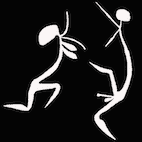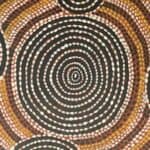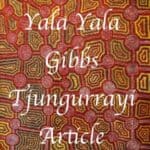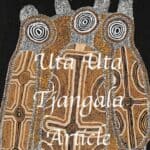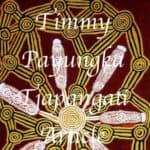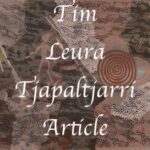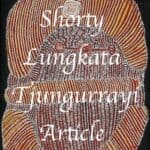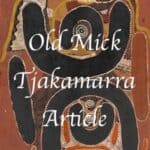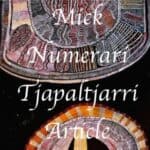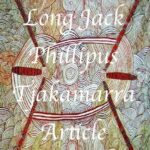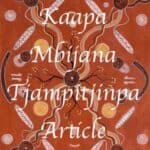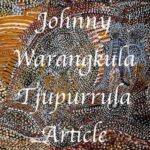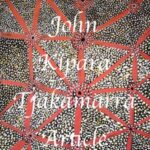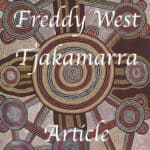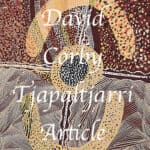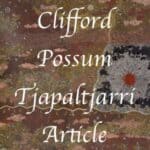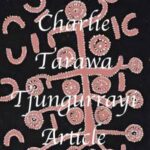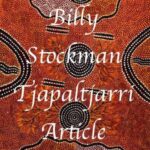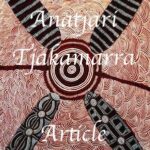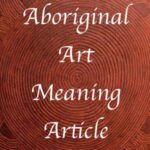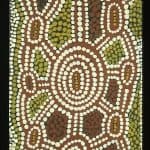Johnny Warangkula Tjupurrula: Aboriginal Artist of the Water Dreaming & Desert Landscapes
Johnny Warangkula Tjupurrula is widely recognised as a foundational figure in the emergence of Western Desert Aboriginal art, and a key innovator in the development of Aboriginal dot painting. A senior Papunya artist, Warangkula played a pivotal role in translating sacred Water Dreaming narratives into dynamic visual forms using European materials. His groundbreaking works from the early 1970s—particularly between 1972 and 1974—redefined Aboriginal art through layered dot fields of varying colour, density, and rhythm. These techniques bridged traditional ceremonial iconography with a style that resonated with contemporary abstraction, captivating collectors and curators worldwide. While many later paintings may appear purely abstract, they remain deeply embedded with spiritual meaning, referencing ancient rainmaking ceremonies and sacred Tjukurrpa (Dreaming).
If you own a Johnny Warangkula painting, I welcome email enquiries about its value or authenticity—please feel free to send a clear JPEG image and dimensions for review.
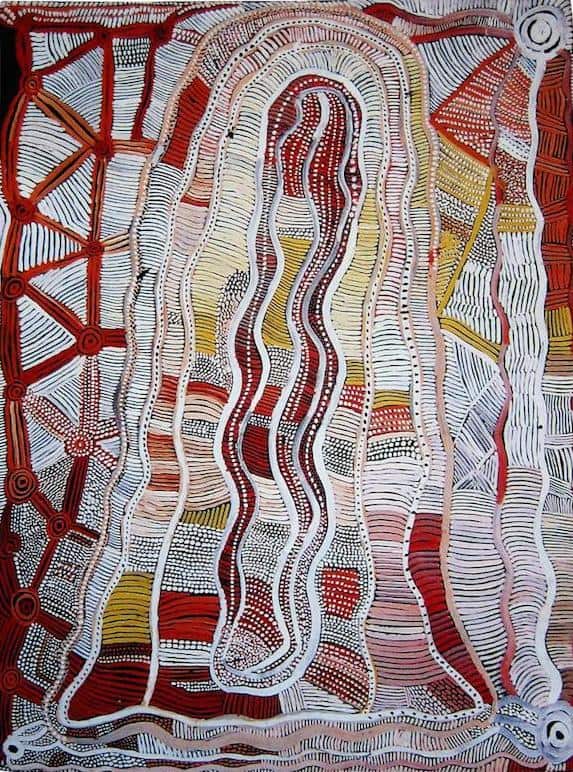

Early Life and Cultural Heritage of Johnny Warangkula Tjupurrula
Johnny Warangkula Tjupurrula was born in 1925, he was spiritually connected to Tjikari waterhole, the site of his conception—a place of profound significance in Western Desert Aboriginal culture. In western desert culture, the location where a child is conceived is not just geographical; it is sacred. It is believed that the Alcheringa—or Dreaming essence—of that place enters the unborn child, making the site their spiritual father. This bond links the individual not only to the land but to all others conceived at that site, creating a powerful network of spiritual brothers, who are united by shared ancestral energy and participate together in rites of passage, ceremony, and law. This sacred brotherhood transcends bloodlines, connecting people across language groups and tribal boundaries through shared spirit, ceremony, and country.
Johnny Warangkula Tjupurrula first encountered white settlers at the age of 12, a pivotal moment in the changing landscape of Western Desert Aboriginal life. By 15, his family relocated to the Hermannsburg mission, a government-controlled settlement that aimed to assimilate Aboriginal families. Despite this, Johnny remained deeply connected to his cultural roots, continuing to undergo traditional Aboriginal initiation ceremonies outside mission life. As a young man, he worked on road and airstrip construction projects around Hermannsburg, a role that took him further across Central Australia, including to Haasts Bluff and Mount Wedge during the 1950s. These experiences deepened his knowledge of Country, while reinforcing the ancestral ties and cultural obligations that would later inform his groundbreaking work as an artist.
He moved into the Aboriginal settlement of Papunya with his first wife in the 1960s. By the early 1970s and like Long Jack Phillipus and Mick Namarari Tjapaltjarri he was a Papunya settlement counselor.
Johnny Warangkula Tjupurrula and the Rise of the Papunya Art Movement
The Papunya art movement, a pivotal moment in contemporary Indigenous Australian art, began in 1971 when schoolteacher Geoff Bardon arrived at Papunya, a remote community in the Northern Territory. Bardon encouraged local Aboriginal to express their cultural stories through using european painting medium.
Bardon formed a men’s painting group, which included some of the most influential early Western Desert artists—among them was Johnny Warangkula Tjupurrula.
Geoffrey Bardon describes Johnny as his friend an intrepid and quiet man with hesitant speech, who balanced life between the Lutheran Mission Church and traditional Aboriginal law. He spoke with a charming seriousness and sincerity and with a considerateness, almost a tenderness towards my painful efforts to understand his stories. He possessed a deep resonant voice, walked with confidence, his head immobile in an army hat and his ‘in-thinking’ giving him an imperious style indeed. The letters VC’ or village councillor on his hatband had been embroidered by the post-primary girls in the Papunya Special School. His intense and warm concentration on painting carried over into his assurance in talking to whites, his general ease of manner making him a dear and gentle friend indeed, Johnny Warrangkula was a Loritja and he was to paint longer and harder and more often than anybody at Papunya; he was indefatigable and his great charm and strong style made him popular and also very influential among the other painters.
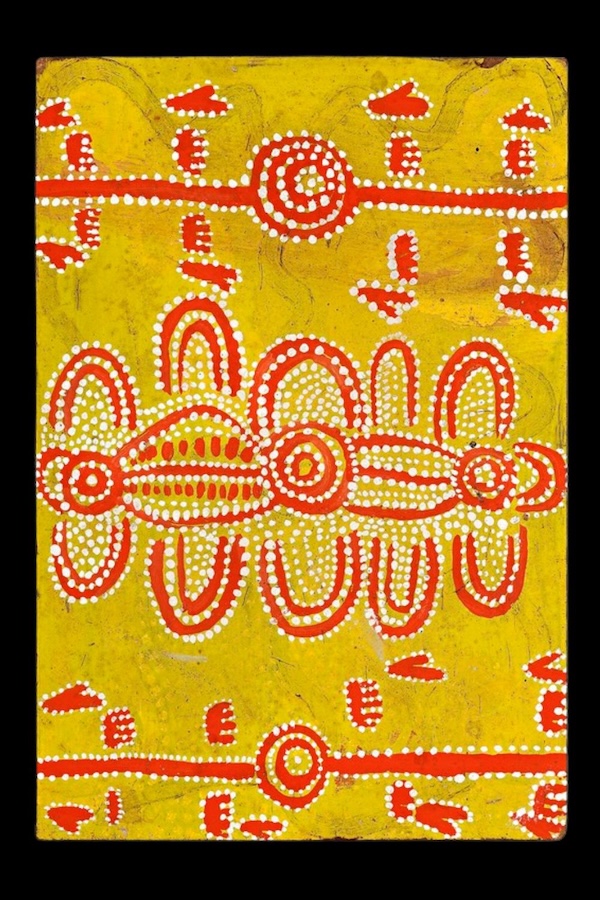
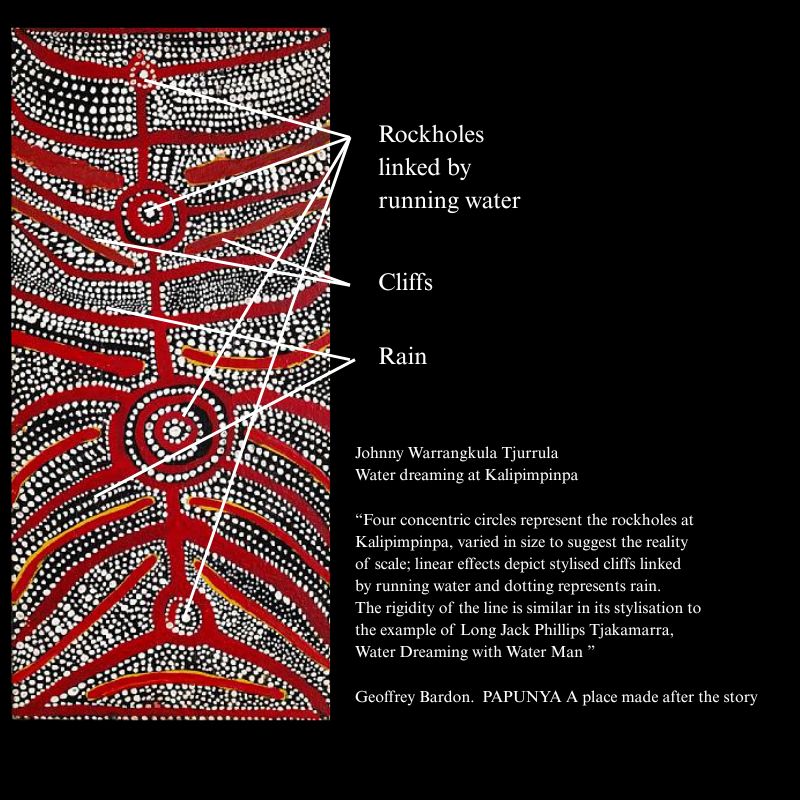
Early Johnny Warrangkula art
To view a Warangkula painting is to take the perspective of a bird soaring above the desert. His work uses aerial perspective, but one that maps significance, not scale
Johnny’s art is centred around the water dreaming and the ceremonies and customs of rainmaking. These dreaming involved rain and Johnny depicted rain using dots. When people ask how did Aboriginal dot art start the answer should be that it started as depictions of Rain in the water dreamings of 1971.
Johnny Warangkula Tjupurrula, who deserves the title The Waterman, belonged to a brotherhood of rainmakers. He carried the ancestral knowledge of the rainmakers—a sacred lineage of men initiated into the powerful Water Dreaming. His paintings are not merely aesthetic works; they are visual manifestations of ceremonial power, ancient knowledge passed down through generations of custodians. They are the echoes of chants, the knowledge of ancestral songs, the traces of footpaths walked during ritual journeys
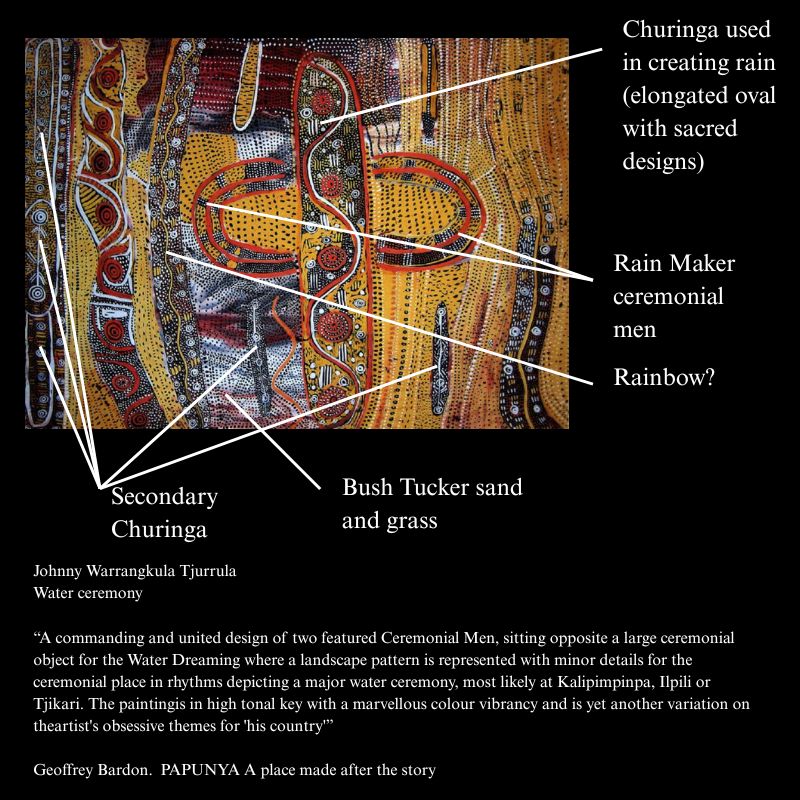

A spiritual cartography
Johnny Warrangkula art uses aerial perspective, but one that maps significance, not scale. A small waterhole may dominate the canvas, not because of size, but because of its generative power. The yala might spiral from this point—not as literal growth from the water, but as a visual affirmation that it is this sacred waterhole, this place of conception and ceremony, that brings life to the land.
His art is not abstract in the Western sense. It is encoded knowledge. Every mark holds meaning
Experimentation
By 1972, Johnny Warrangkula was experimenting with dotting techniques and had discovered the plastic qualities of the painting medium and had begun to establish an analogy between the dotted field – traditionally associated with ceremonial decorations – and the depiction of vegetation in the desert landscape.
The underlying powerful iconography was increasingly encoded by the subtly differing dotfield designs leading to greater abstraction while still solidly anchored in traditional spirituality


It is the encoded secret knowledge hidden in the abstraction that I feel draws people to his art. This Water Dreaming at Kalipinypa 1972 for example screams to be understood. These are not abstract compositions for their own sake, nor merely decorative patterns; they are deeply structured visual expressions of Tjukurrpa (Dreaming). The waterhole, the sacred churinga, running water, bush tucker and the rainmaker are still present but they flow to become a singularity which under Aboriginal understanding, have always existed as one.
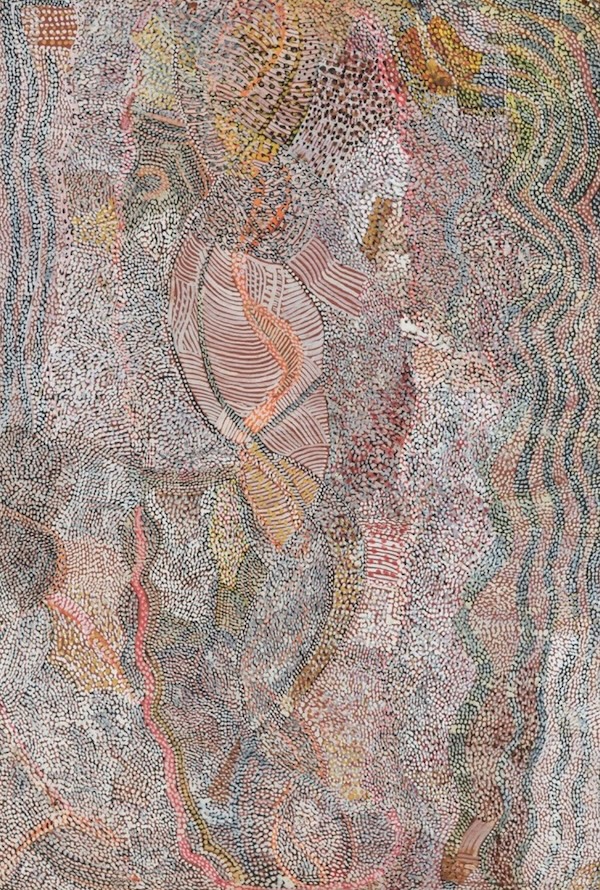
Johnny Warangkula Tjupurrula: Master of Abstract Expression
By 1973, Johnny Warangkula Tjupurrula had begun to revolutionize his approach to painting, stepping away from clear traditional iconographic elements tied to his inherited cultural rights and Dreaming stories. Instead, he turned his focus toward a more abstract and innovative visual language—characterized by the dynamic interplay of dots, bars, and parallel line patterns that would soon become the hallmark of his signature style.
This shift marked a defining moment in Tjupurrula’s artistic evolution. His work in 1973 represented a creative breakthrough, with a prolific output that solidified his position not just as a skilled contributor, but as a trailblazer in the emerging Papunya Tula movement.
While early on he may have remained in the background compared to other artists in the Papunya collective, Johnny Warangkula’s subtle use of color, texture, and rhythm quickly set him apart. His unique, poetic abstraction helped lay the foundation for what is now internationally recognized as contemporary Aboriginal dot painting.
Winpa the rainmaker and the Water Dreaming series.
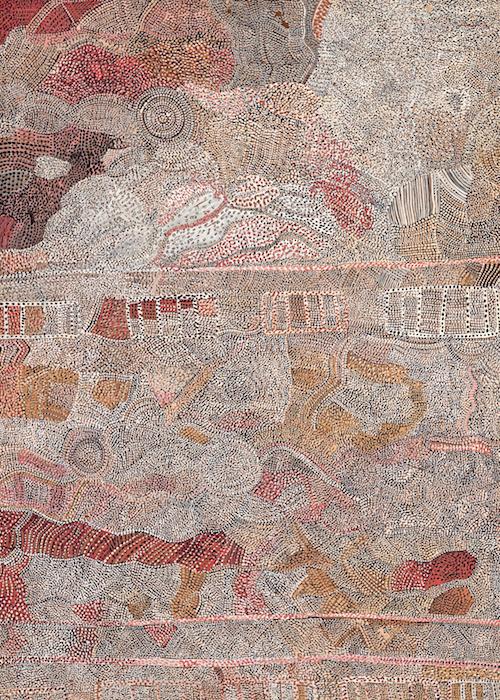
Johnny Warangkula Tjupurrula Later Life
By the mid-1980s Johnny Warangkula Tjupurrula’s eyesight began to fail. His painting became infrequent and of poorer quality. By the end of the 1990s Warangkula was old and infirm.
These later paintings are not popular with collectors and hold little value.
In the 1990’s he started painting again and produced hundreds of raw expressionistic paintings. These later paintings though were crude and paled compared to his earlier works.
He spent the last years of his life with his wife and children in Papunya. His greatest legacy is the simple but enigmatic dot-dot background. It is so strongly associated with aboriginal art that it is now almost inseparable.
Warangkula Tjupurrula name can also be spelled Warangkula Djupurrula or Warangkula Jupurrula. His Christian name was Johnny
Warangkula Tjupurrula is sometimes spelled, Warungula or Warrangula
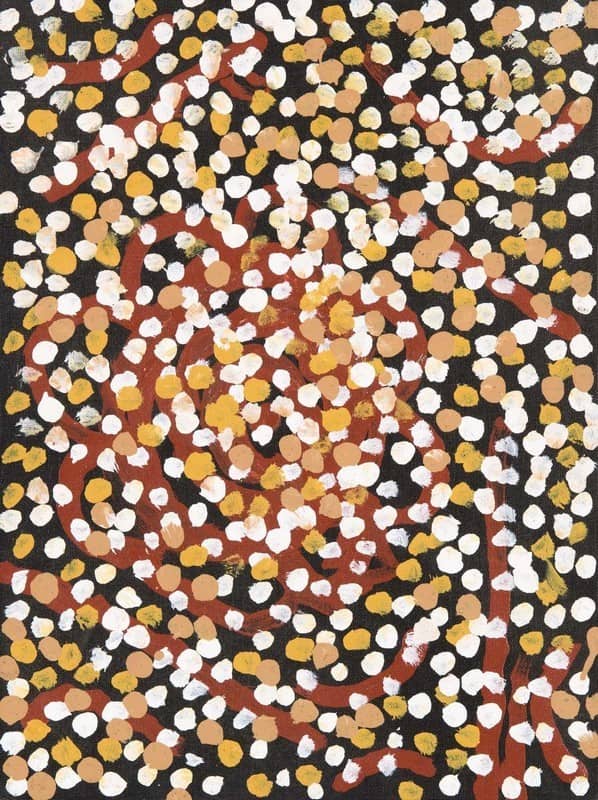
Johnny Warangkula Tjupurrula references
Papunya Tula Art of the Western desert
Lives of the Papunya Tula Artists
Johnny Warangkula Tjupurrula Value
My online sales database of Johnny warangkula Tjupurrula artworks contains 98 artworks along with the Auction hammer price.
Many factors go into influencing the value of an artwork much more than only the visual image. The provenance, date painted size and importance of the work within the canon of work are also often crucial factors
If you have a Johnny Warangkula Tjupurrula artwork and wish to get a valuation please send me an image. Please include the size and any labels or extra information available.
Some Johnny Warangkula Tjupurrula Artworks explained
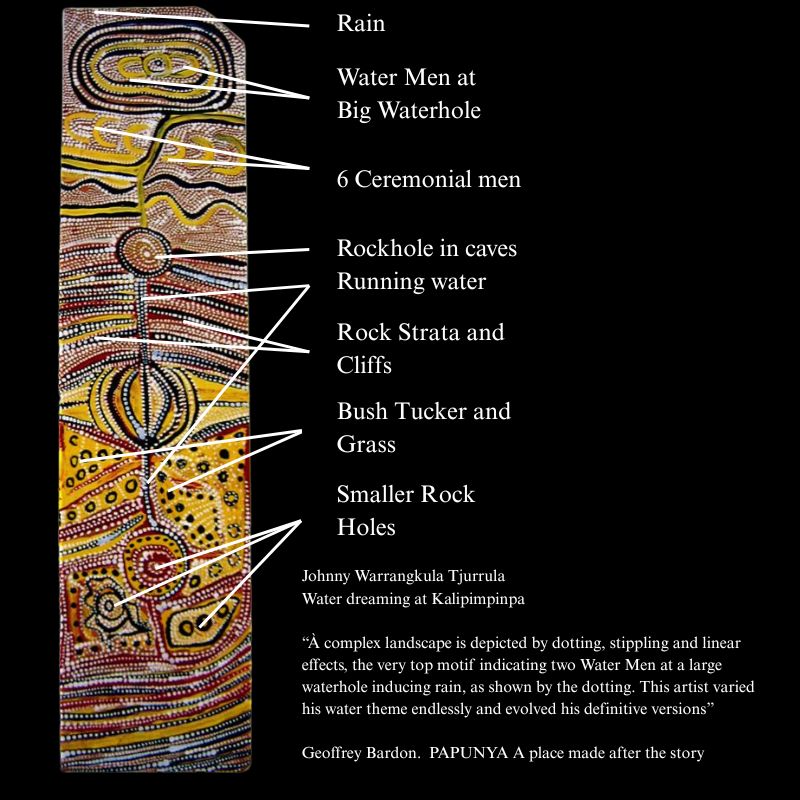
Water dreaming at Kalipimpinpa
Johnny warrangkula was a custodian of this dreaming but the dreaming was shared with his spiritual brothers including Long Jack Tjakamarra, Old Mick Wallangkari and Old Walter Tjampitjinpa.
Careful examination of Old Mick’s “Rain Ceremony” gives a clear but deliberately incomplete picture into the rain making ceremony
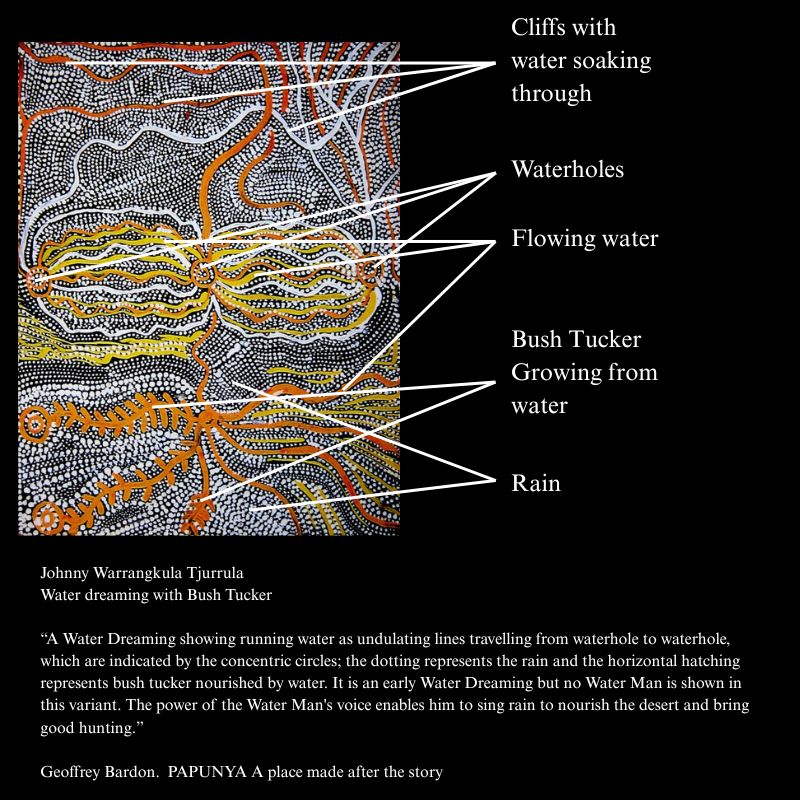
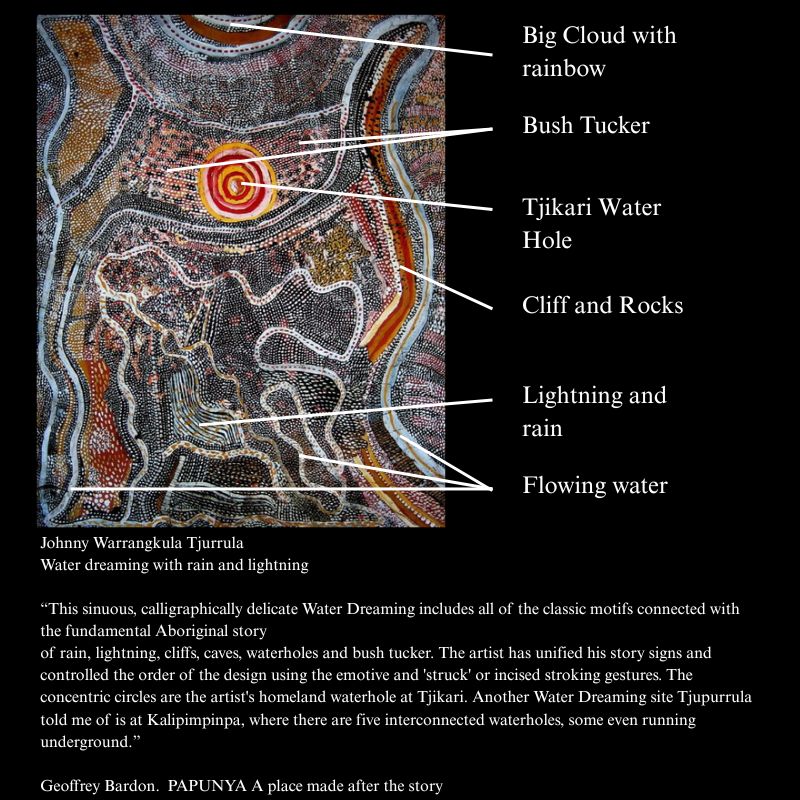
Rain, lightning and stars at night
This painting tells the story of rain and lightning rain and lightning and stars at night at Kaliginypa. The open circles represent the stars. The closed circles are caves in the rock. To the right is a ancestral spirits’s track. Winpa, an ancestral figure who generated a huge storm at Kalipinypa he is present but hidden. If you look carefully a procession his red footprints are partly concealed with white dots on the right-hand side of this work. Warangula’s created this first major work, Rain, lightning and stars at night in a style more consistent with works produced in mid to late 1972. Covering secret sacred meaning with dots lead to a dotting technique now inseperable from Aboriginal Art. The painter overlays and intersecting sinuous lines trace the movement of waterways by the falling rain.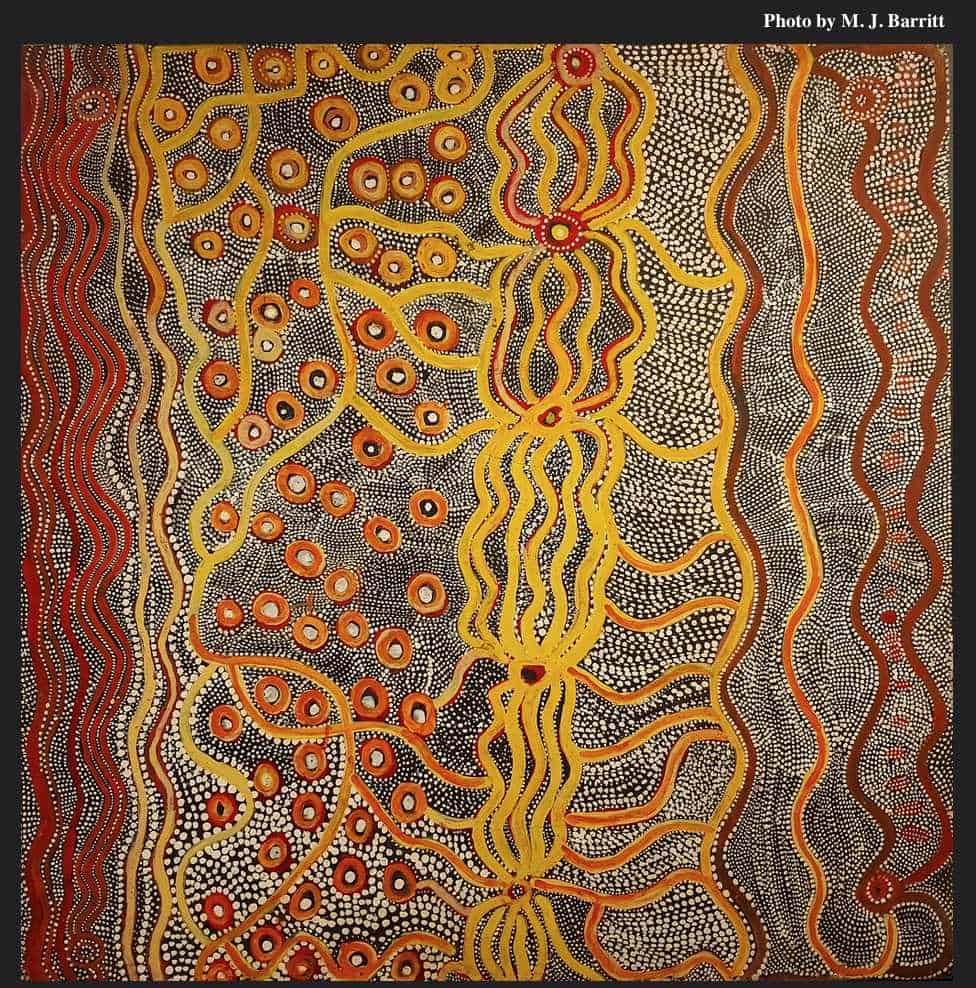
Painted 1971, synthetic polymer paint on chipboard.
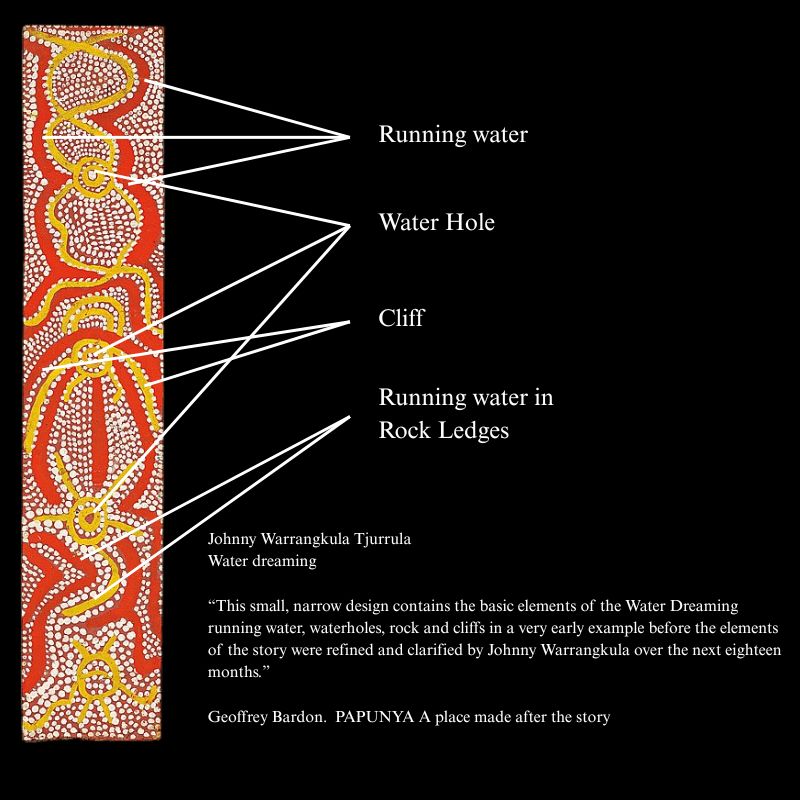
Women camped at Kampurrula
Women’s Dreamings are rare in the corpus of paintings by Johnny Warangkula Tjupurrula. This painting features two women’s camps in luxuriant fields of bush tucker nourished by the rains created by the ancestor beings. The artist well known for his early paintings of Rain and Water Dreamings of Kalipinypa, Tjikari and Ilpilli. Kampurarrpa (Kampurrula) is a site close to Ilpilli in the Ehrenberg Ranges. The painting shows two camps; the women, symbolised by the double-U forms either side of a set of concentric circles,. Their equipment of digging sticks and oval carrying dishes coolamon are clearly shown. Their footprints, leaving and returning to the camps suggest a series of foraging expeditions. These footprints also mark the choreography of dance ceremony. The set of concentric circles that run vertically through the composition represent waterholes. The continuous lines that weave around these relate symbolize rain and flowing water. The red lines that meander laterally and diagonally across the picture possibly represent a vine (ngalyipi). This vine is woven by women into ceremonial dress.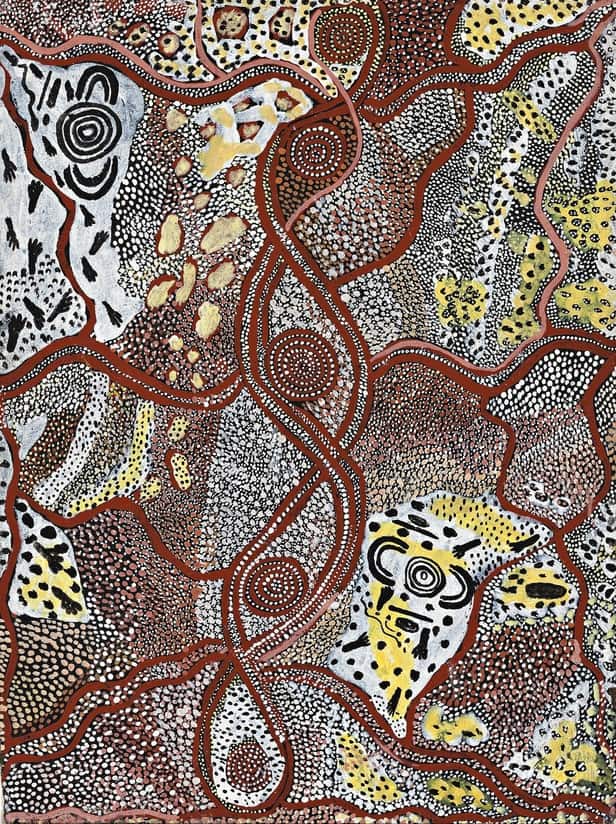
Painted synthetic polymer paint on board 58.0 x 43.0 cm
Mala Rufous Hare Wallaby Dreaming
Mala, Rufous Hare Wallaby distinctive inhabitant of the Western Desert. The hare-sized animal sheltered in needle-sharp tussocks of mature spinifex. Fire was used by the Pintupi to flush Mala from cover, so hunters could dispatch the wallabies as they fled. Johnny Warangula was intimately associated with the Mala ancestors. He inherited custodianship of the Dreaming from his father and grandfather, who were born at Tjikarri. There are two distinct narratives associated with Tjikarri. The first involves the Nananana men hunting Mala with fire. The second the journey of an old sorcerer who, with the aid of a Mala horde, pursues a giant dingo-like creature, Matinpilangu.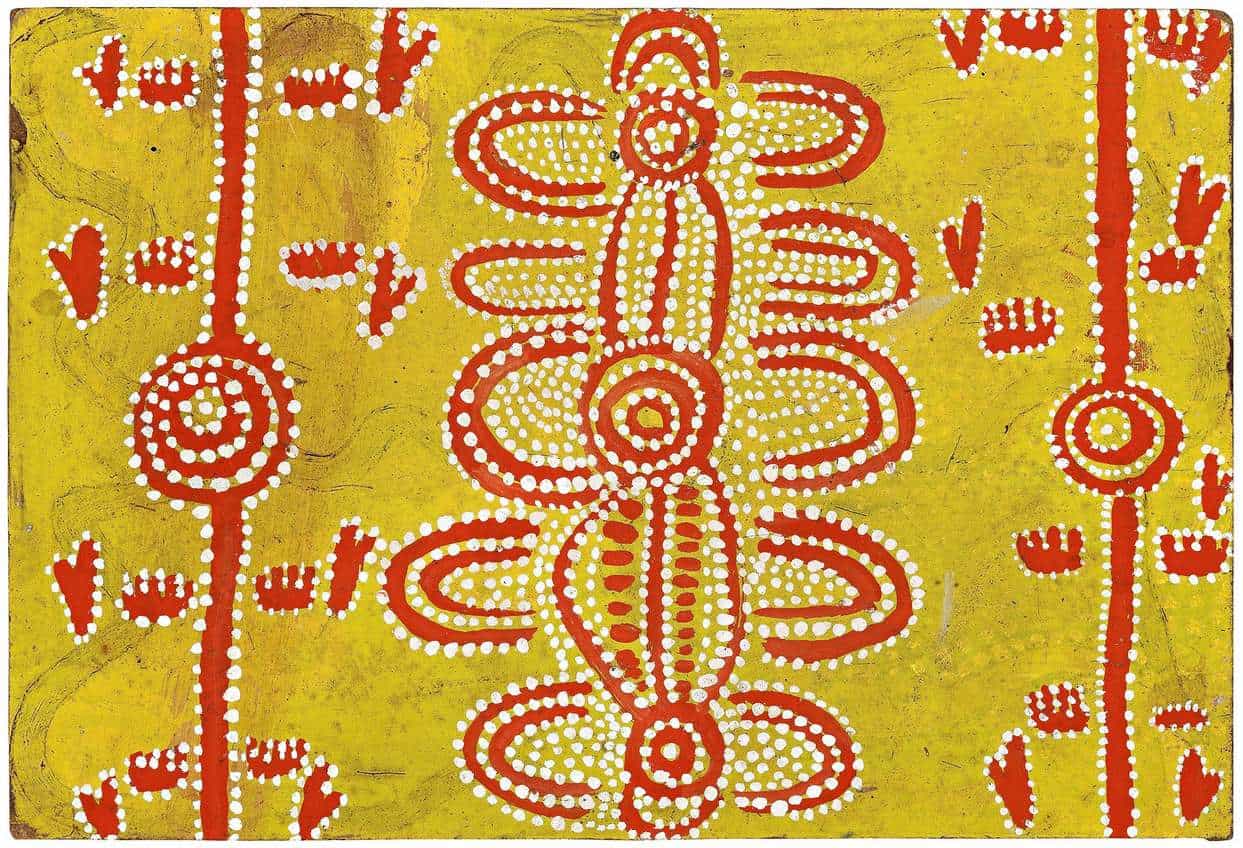
Early Papunya Artworks and Articles
All images in this article are for educational purposes only.
This site may contain copyrighted material the use of which was not specified by the copyright owner.
